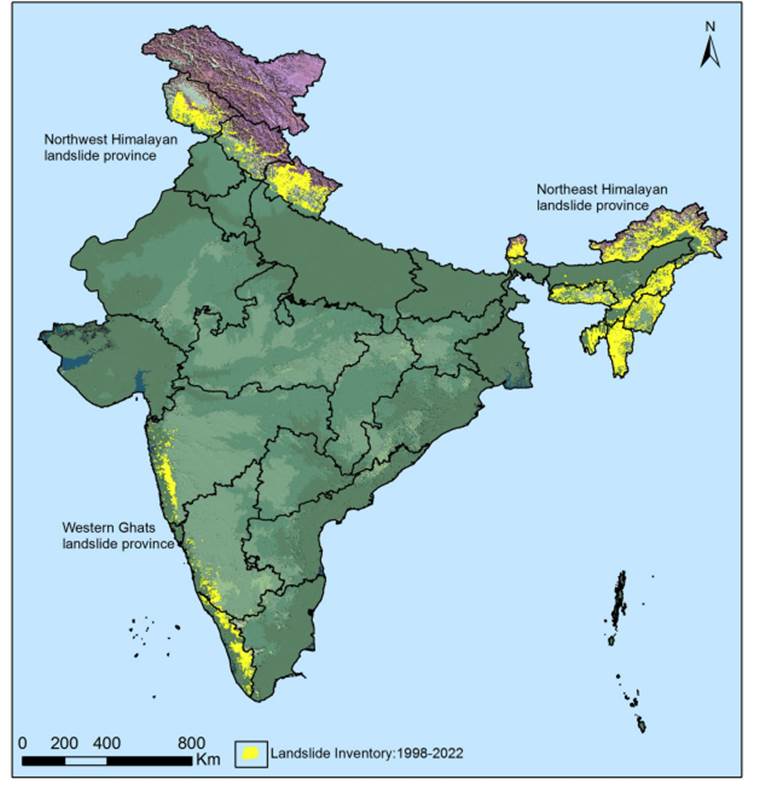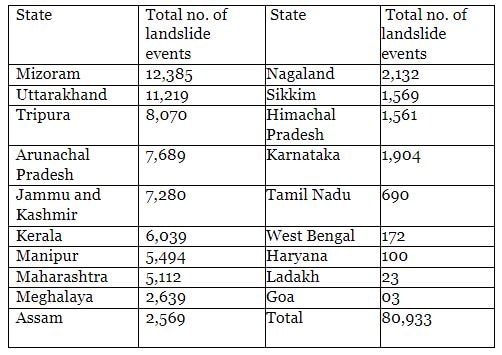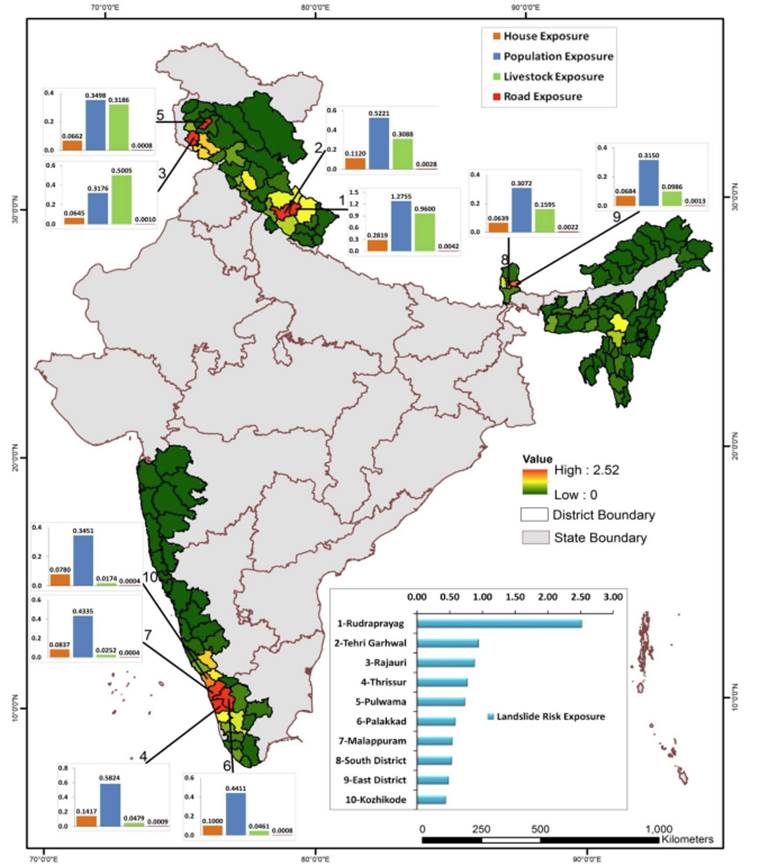1. H3N2 virus
Context: India has recorded deaths of two people due to the Influenza A subtype H3N2 virus.
Key details:
-
About the virus:
-
Influenza viruses, which cause the infectious disease known as flu, are of four different types:
- A, B, C and D.
- Influenza A is further classified into different subtypes and one of them is the H3N2.
- H3N2 caused the 1968 flu pandemic that led to the death of around one million people globally and about 100,000 in the US.
-
Influenza viruses, which cause the infectious disease known as flu, are of four different types:
-
Symptoms of H3N2:
- Its symptoms are similar to that of any other flu.
- They include cough, fever, body ache and headache, sore throat, a runny or stuffy nose and extreme fatigue.
- Nausea, vomiting and diarrhoea are rare.
-
Vulnerability:
- This virus usually preys on individuals below the age of 15 years or above 50 years of age.
- Children and those with co-morbidities like asthma, diabetes, heart disease, weakened immune systems and neurological or neurodevelopmental conditions are at a higher risk.
-
Prevention:
- Self-hygiene is the best way to thwart the spread of H3N2.

2. International Maritime Exercise
Context: INS Trikand participated in Sea Phase-I of the International Maritime Exercise.
Key details:
-
The exercise:
- The International Maritime Exercise is also known as the Cutlass Express 2023 (IMX/CE-23).
-
Participants:
- India,
- Bahrain,
- Japan,
- Oman,
- Saudi Arabia,
- UAE,
- UK and
- USA
-
Aims:
- enhancing maritime security,
- keeping shipping lanes open and
- ensuring safety of navigation.
-
About INS Trikand:
- INS Trikand is part of the Indian Navy’s Western Fleet and operates under the Western Naval Command headquartered at Mumbai.
- It is a Talwar-class frigate of the Indian Navy.
- She was built by the Yantar shipyard in Kaliningrad, Russia.
- She was commissioned to Indian Navy service in 2013.
3. Controlled re-entry
Context: The Indian Space Research Organisation brought down a satellite in a controlled manner after its end of life for the first time.
Key details:
-
About the satellite:
- The weather satellite Megha Tropiques-1, which was developed as a joint mission by Indian and French space agencies, entered the atmosphere and burnt up over the Pacific Ocean.
- It was launched in 2011.
- Although the planned mission life of the satellite was only three years, it continued providing data on water cycle and energy exchanges in the tropics for nearly a decade.
- This was the first time that the space agency attempted such a manoeuvre to clear out space debris despite the satellite not being built to do so.
- What is a controlled re-entry?
- Controlled re-entries involve deorbiting to very low altitudes to ensure impact occurs within a targeted safe zone.
- Usually, large satellites/rocket bodies which are likely to survive aero-thermal fragmentation upon re-entry are made to undergo controlled re-entry to limit ground casualty risk.
-
Need for controlled re-entry:
- With several space fairing nations and private entities launching satellites, mostly in low earth orbits, it has become imperative to keep the space clean.
- Moving at extremely high speeds, even the smallest debris can destroy active satellites.
-
Kessler syndrome:
- a scenario where the amount of space debris reaches a point where they just create more with one collision triggering others.
-
India’s initiatives in this direction:
- ISRO has set up a department last year to monitor the space debris and mitigate the risks posed.
- The space agency was also following the guidelines of UN and the Inter-Agency Space Debris Coordination Committee (IADC) that say satellites should be deorbited after mission life:
- either through controlled entry over a safe impact zone
- or by bringing it down to reduce the orbital lifetime (the time it would take for a satellite to drop from a particular orbit by itself) to less than 25 years.
-
Controlled re-entry can be used on which types of satellites?
- A controlled re-entry is possible only for satellites in the low-earth orbit – at about 1,000 kms over the surface of the earth and not geosynchronous or geo-stationary orbits.
- It takes debris from the low earth orbit 20 to 30 years to fall to the atmosphere naturally, it would take generations for those in geosynchronous or geo-stationary orbits to fall.
-
What happens to satellites in higher orbits?
- They are usually moved to graveyard orbit.
- Instead of bringing them down, they are shot upwards at the end of life.
- These orbits are like parking lots in space where all old satellites are put in.
- Sometimes a satellite might escape to deep space.
- A satellite escapes to deep space when its velocity increases enough to get away from the gravitational pull of the earth.
- They are usually moved to graveyard orbit.
What is an uncontrolled re-entry?
- In an uncontrolled re-entry, the rocket stage simply falls.
- Its path down is determined by its shape, angle of descent, air currents and other characteristics.
- It will also disintegrate as it falls.
- As the smaller pieces fan out, the potential radius of impact will increase on the ground.
- Some pieces burn up entirely while others don’t.
- Because of the speed at which they’re travelling, debris can be deadly.
- Most rocket parts have landed in oceans principally because earth’s surface has more water than land.
- But many have dropped on land as well.
| Indian Space Research OrganisationAbout:Indian Space Research Organisation (ISRO) is the space agency of India.The organisation is involved in science, engineering and technology to harvest the benefits of outer space for India and the mankind.It operates under the Department of Space (DOS) which is directly overseen by the Prime Minister of India.ISRO built India’s first satellite, Aryabhata, which was launched by the Soviet Union in 1975.History:ISRO was previously the Indian National Committee for Space Research (INCOSPAR), set up by the Government of India in 1962, as envisioned by Dr. Vikram A Sarabhai.ISRO was formed on August 15, 1969 and superseded INCOSPAR with an expanded role to harness space technology.DOS was set up and ISRO was brought under DOS in 1972.Aim:The prime objective of ISRO is the development and application of space technology for various national needs.Headquarter: Bengaluru.Chairman:The activities of ISRO are guided by its Chairman, who would also be the secretary of DOS and Chairman of Space commission.Space commission is the apex body that formulates the policies and oversees the implementation of the Indian Space Programme. |
4. Hypersonic missiles
Context: Russia unleashed its biggest aerial strike against Ukraine where it used six hypersonic missiles, known as Kinzhals, or Daggers.
What is a hypersonic missile?
- A hypersonic missile is capable of flying at least at the speed of Mach 5, i.e. five times the speed of sound, and is manoeuvrable.
- Unlike ballistic missiles, hypersonic missiles do not follow a ballistic trajectory (set path) and can be manoeuvred to the intended target.
- This makes them extremely lethal because by the time they are detected by ground-based radars, they are already quite near to their target.
-
Types:
-
Hypersonic Glide Vehicles (HGV):
- The HGVs are fired from a rocket before gliding to the intended target
- Hypersonic Cruise Missiles:
- The hypersonic cruise missile is powered by air-breathing high-speed engines or ‘scramjets’ after acquiring their target.
-
Hypersonic Glide Vehicles (HGV):
-
Benefits of hypersonic missiles:
- Hypersonic weapons can enable responsive, long-range strike options against distant, defended or time-critical threats (such as road mobile missiles) when other forces are unavailable, denied access or not preferred.
-
About Kinzhal
- Kinzhal is capable of reaching speeds of Mach 10 and greater, with a range of about 1,250 miles.
- The missile is also believed to be nuclear-capable and usually launched by MiG-31 warplanes.
- Apart from Kinzal, Moscow reportedly has two other types of hypersonic missile systems:
- The Avangard hypersonic glide vehicle
- The Zircon anti-ship missile

5. PM VIshwakarma KAushal Samman (PM VIKAS)
Context: The Prime Minister of India will address the post-budget webinar on ‘PM VIshwakarma KAushal Samman (PM VIKAS)’
Key details:
- ‘PM VIshwakarma KAushal Samman (PM VIKAS)’ aims at improving the quality, scale and reach of products/services of artisans/crafts people by integrating them with the domestic and global value chains.
- It will unlock the potential of thousands of artists and craftspeople through the provision of skills training, technology, and the opening of credit lines to them.
-
Main components of the scheme:
- Financial aid
- Advanced skill training
- Access to the latest technology
- Integration into the MSMEs
- Paperless payments
- Wider reach and introduction to a global market
Other schemes for the artisans:
- Ambedkar Hatshilp Vikas Yojna:
- Under the program, support is provided to the artisans through:
- technology and integrated design development project,
- commercial market intelligence, and
- assistance to entrepreneurs and exporters for design prototypes.
-
Mega cluster scheme:
- It aims to scale up production and infrastructural chains at handicraft centres that have remained unorganized.
-
Marketing support and services scheme:
- It provides interventions for domestic marketing events to artisans, such as providing financial assistance for participating and organizing marketing events in India.
6. MSME Competitive Lean Scheme
Context: Union Minister for Micro, Small and Medium Enterprises (MSME) launched the MSME Competitive (LEAN) Scheme.
Key details:
- Under the Scheme, MSMEs will be assisted in reducing their manufacturing costs, through:
- proper personnel management,
- better space utilization,
- scientific inventory management,
- improved processed flows,
- reduced engineering time and so on.
- LMCS (Lean Manufacturing Competitiveness Scheme) also brings improvement in the quality of products and lowers costs.
- Under the scheme, MSMEs will implement LEAN manufacturing tools like 5S, Kaizen, KANBAN, Visual workplace, Poka Yoka etc under the able guidance of trained and competent LEAN Consultants.
-
Benefits:
- Financial assistance is provided for implementation of lean manufacturing techniques.
- The government will contribute 90% of implementation cost for handholding and consultancy fees.
- There will be an additional contribution of 5% for the MSMEs which are part of SFURTI clusters, owned by women/SC/ST and located in north eastern region.
-
Lean Manufacturing Consultant:
- An Individual or a Consultancy Firm duly registered with or certified by a reputed certification agency in the field of manufacturing technology, quality control etc., would be an eligible entity to participate in the Scheme as a LMC.
-
Eligibility:
- The Scheme is open to all Micro, Small or Medium enterprises as per the definition of the MSME Act.
7. Landslide Atlas of India
Context: The Indian Space Research Organisation (ISRO) recently released the Landslide Atlas of India, a detailed guide identifying landslide hotspots in the country.
What are landslides?
- Landslides are natural disasters occurring mainly in mountainous terrains where there are conducive conditions of soil, rock, geology and slope.
- A sudden movement of rock, boulders, earth or debris down a slope is termed as a landslide.
-
Causes:
-
Natural:
- heavy rainfall,
- earthquakes,
- snowmelting
- undercutting of slopes due to flooding.
-
Anthropogenic:
- excavation,
- cutting of hills and trees,
- excessive infrastructure development,
- overgrazing by cattle.
-
Natural:
-
Risks:
- Considered among the most frequent natural disasters, landslides are extremely hazardous, posing a threat to human and animal lives.
- It damages property, roads and bridges, disrupting communication lines and snapping power lines.
-
Influencing factors:
- Lithology,
- Geological structures like faults,
- Hill slopes,
- Drainage,
- Geomorphology,
- Land use and land cover,
- Soil texture and depth,
- Weathering of rocks.
- In India, rainfall-induced landslide events are more common.

How are landslides classified and mapped?
- Landslides are broadly classified based on:
- the type of materials involved (rock, debris, soil, loose mud),
- type of movement of the material (fall, topple, slide, rotational slide or translational slide), and
- type of flow of the material.
- Another category is of landslides that spread laterally.
- Landslides mapped in the ISRO atlas are mainly event-based and season-based.
-
How ISRO has prepared the atlas?
- ISRO’s National Remote Sensing Centre (NRSC), Hyderabad, has created a database of landslide-prone regions of India based on events during 1998 – 2022, primarily along the Himalayas and the Western Ghats.
- In addition to aerial images, high resolution satellite images captured using cameras were used to study the landslides over the past 25 years.
- The pan-India landslide database classifies landslides into:
- seasonal (2014, 2017 monsoon seasons),
- event-based and route-based (2000 – 2017).

Findings of the atlas:
- India is considered among the top five landslide-prone countries globally.
- Rainfall variability pattern is the single biggest cause for landslides in the country, with the Himalayas and the Western Ghats remaining highly vulnerable.
- Excluding snow covered areas, approximately 12.6 per cent of the country’s geographical land area (0.42 million sq km) is prone to landslides.
- 66.5 per cent of the landslides are reported from the North-western Himalayas, about 18.8 per cent from the North-eastern Himalayas, and about 14.7 per cent from the Western Ghats.
- Nearly half of the country’s landslide-prone area is located in the states of:
- Assam,
- Arunachal Pradesh,
- Sikkim,
- Meghalaya,
- Mizoram,
- Manipur,
- Tripura
- Nagaland.
- In the Western Ghats, despite fewer events, landslides were found to be making inhabitants significantly vulnerable to fatalities, especially in Kerala.

-
Highest number of landslides (1998-2022):
- Uttakarkhand, Kerala, Jammu and Kashmir, Mizoram, Tripura, Nagaland and Arunachal Pradesh.
- Mizoram topped the list, recording 12,385 landslide events in the past 25 years.
- Kerala has been consistently reporting massive landslides since it suffered the century’s worst floods in 2018.
- The NRSC ranked Rudraprayag in Uttarakhand at the top of 147 vulnerable districts.
8. Women’s Reservation Bill
Context: Bharat Rashtra Samithi began a day-long hunger strike demanding passage of the Women’s Reservation Bill (WRB).
Key details:
-
About the bill:
- The Bill will reserve one-third of the total number of seats in state Assemblies and Parliament for women.
- The WRB was passed in the Rajya Sabha in 2010 but the Lok Sabha never voted on it.
- The Bill has since lapsed.
-
Features of the Bill
- The allocation of reserved seats shall be determined by such authority as prescribed by Parliament.
- One third of the total number of seats reserved for Scheduled Castes and Scheduled Tribes shall be reserved for women of those groups in the Lok Sabha and the legislative assemblies.
- Reserved seats may be allotted by rotation to different constituencies in the state or union territory.
- Reservation of seats for women shall cease to exist 15 years after the commencement of this Amendment Act.
- Origin:
- The original idea for this bill originated from a constitutional amendment which was passed back in 1993.
- The constitutional amendment stated that a random one third of village council leader, or Sarpanch, positions in the gram panchayat should be reserved for women.
- The Women’s Reservation Bill was launched as a long term plan to extend this reservation to Lok Sabha and state legislative assemblies.
- Later, this temporary provision was disabled.
- Again in 1996, the bill lapsed, as houses used to get dissolved every time.
- From 1996 to 2007, the bill was dissolved for various reasons such as:
- no answer by the president,
- illiteracy among women, and
- no majority of votes supporting women.
- In 2008, the bill was again served to the Rajya Sabha which cleared the women’s reservation bill in 2010.
- The Lok Sabha did not vote on the bill from 2010 to 2022.
- Need for Women’s Reservation Bill:
- Lower Women’s participation
- Fewer opportunities at a higher level of government
- Gender discrimination
- Political discrimination
